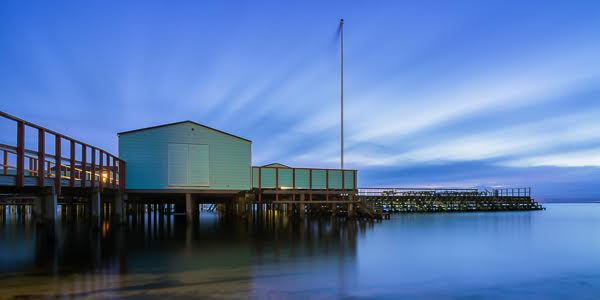Independence day is coming up in the USA (July 4th) and you’re bound to see a lot of articles start popping up about how to shoot fireworks. So many, in fact, that you might start to think it’s some kind of dark art (Ha! Dark, get it?). It’s pretty simple though, especially if you have a digital camera with a working LCD.
admin
John Watson is the original founder of Photodoto. If you're interested in what John has been up to, you can browse his personal blog.
How do you name your digital photographs?
Each photograph I download from a memory card is automatically renamed with the date and time the image was shot. For example: 20060623_140123.jpg says that the photo was taken on June 23, 2006 at 2:01 PM (and 23 seconds). Each time photos are downloaded from a card, they’re put into a unique directory named after the current date. If I do more than one batch per day then a batch number is appended. For example: 2006_06_23 or 2006_06_23_01. For events or special occasions I’ll append a description to the folder name. The image download software that came with my Nikon does all of that for me but it wasn’t the default. Most image download software will allow you to do this and more.
It’s a nice naming system because each photo gets a unique identifier and it makes it easy to find the actual photo given the name or the date when you remember shooting it. Having a unique identifier for each photo is important if you’re selling prints since it allows your customers to tell you exactly which photo they want to buy without any misinterpretation (and if you’re licensing them for use you can put that ID in the license).
… Continue reading How do you name your digital photographs?
Motorcycle photographer ahead
That’s what the sign read as I rode my CBR-600 down Santiago Canyon toward Cook’s today. And in a few hundred feet, there he was by the side of the road under the shade of a small canopy armed with a laptop, tripod, and digital camera. An enterprising photography business had setup on the north bound side of the road to take photos of bikers as they headed south. The photographs were then wirelessly transmitted to a truck at Cook’s about 200 feet further on where bikers could view them and buy prints. Pretty clever.
Weekend assignment: Available light night photography
Capturing light is the essence of photography. So what do you do when the sun goes down? Fortunately, light is ever present, be it the sun, moon, stars, a single flashlight under the covers, or the glow of a city at night bustling with activity. Making photographs at night is a strange and wonderful thing.
… Continue reading Weekend assignment: Available light night photography
An introduction to macro and close-up photography
Macro photography is one of the most demanding disciplines of photography. The world of the small is a strange and unique place and makes some unusual demands on a photographer interested in capturing its beauty. Razor thin depth of field, extremely close working distances, and long exposure times combine to make macro photography a challenge. But it’s a challenge with a reward. Macros reveal a world that can’t be seen with the naked eye, alien landscapes, and strange creatures both beautiful and grotesque. I encourage you to try it. Many who do find a passion for macro photography they never knew existed.
… Continue reading An introduction to macro and close-up photography
DIY digital photo frame
Photojojo.com this week points to a great idea for converting an old laptop computer into a digital photo frame (Popular Science). I happen to have a working late 90s vintage laptop sitting around gathering dust that I am going to convert. I’ll be sure to carefully document the entire process so that I can provide a bit more instruction than the Popular Science article did. Look for it in the coming weeks.
Tips for shooting a children’s birthday party
As a father of two, I’ve shot my share of birthdays. My own kids’, sure, but also plenty of others on the never ending “birthday circuit.” You parents know what I’m talking about… My kids have more friends and have been invited to more birthday parties in six years than I’ve ever been to in my entire life. When I’m shooting a birthday, for myself or someone else, 90% of the photos are candid. I’ll do one or two posed group shots but candids are the truest way to capture the excitement and emotion of children at play.
… Continue reading Tips for shooting a children’s birthday party
A solution for perfect group photos
 Next Saturday I’m going to be doing about 30 group portraits with two to three poses each. And if you’ve ever taken a group photograph, you know how frustrating it can be trying to get everyone looking the same way at the same time, not blinking, or generally not looking goofy.
Next Saturday I’m going to be doing about 30 group portraits with two to three poses each. And if you’ve ever taken a group photograph, you know how frustrating it can be trying to get everyone looking the same way at the same time, not blinking, or generally not looking goofy.
If the group is paying attention it might only take two or three shots to get everyone synchronized. Fortunately for me, this is a dance studio so I’m not going to be dealing with inebriated party-goers. On the other hand, many of them are children. So what happens after the shoot when I find one or two photos where I didn’t notice someone blinking?
Learning composition: foreground, middleground, background
In traditional landscape photography (or cityscape or seascape), photographers combine wide angle lenses with small apertures to achieve sharpness throughout an entire scene from the foreground to the background. This is in direct contrast to, say, portrait photography where the background is intentionally blurred. When looking at a photograph, the eye naturally goes to foreground elements and wants to rest on whatever is in focus. That works out perfectly for portraits where you usually want the focus on the eyes of your subject. The blurred background and in-focus foreground are strong compositional elements that focus attention where you want it. But in a photograph with everything in focus, you can’t rely on a single focus point to hold the viewer’s attention.
… Continue reading Learning composition: foreground, middleground, background
Learning composition: Leading the eye
Photo Friday is a weekly photography competition where everyone votes and the six entries with the most votes are chosen as “Noteworthy.” I’ve written about leading the eye into a scene before but I thought last week’s competition, The Road, illustrated the point very nicely. Of the six noteworthy photos, five of them were landscape photographs that used a road as a strong compositional element to lead the eye through the photo to other interesting elements in the scene. Four of those used an uncluttered, s-curve type road. People seem to have a natural attraction to meandering curves in a scene.
Here are the photos:
The Open Road
Final solitude (before the beginning)
The road
Toto, I’ve a feeling we’re not in Kansas anymore…
Road to heaven
And the sixth? A great photo that got through on sheer power of personality: Euphoria.
to start
making profit!








